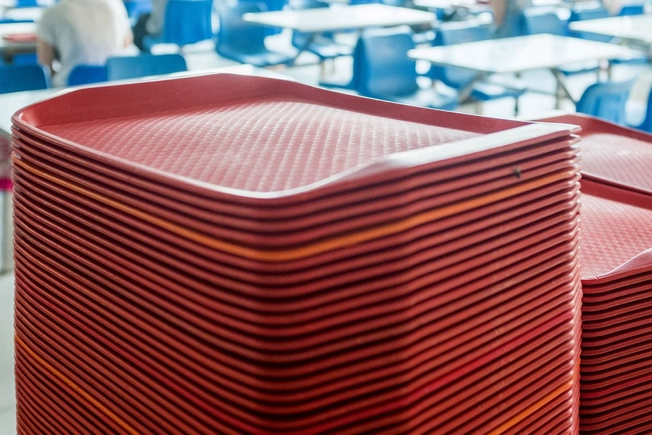Germiest Things in Restaurants


Upon Closer Inspection ...
Every restaurant has to have regular health inspections to stay in business. But even if one gets a passing grade, chances are you're going to come into contact with a few unhealthy germs there. Some are more likely than others, so it's a good idea to know where to watch for them and how you might avoid them.

Menus
Sometimes the germiest things on a restaurant’s menu may literally be the menu. Studies have shown that traces of E. coli and S. aureus (staph) can be found on menus, thanks to their being passed from hand to hand.
Plastic menus are more germy than paper menus, especially if they get wet. Plastic can't absorb water, so it sits there until it evaporates, which gives bacteria plenty of time to grow. Washing your hands after you touch a menu and before you eat anything, especially finger food or foods that are shared, can help prevent the spread of germs.

Touch Screens
These can make it faster and easier to order, but they also can make it faster and easier to pick up germs.
London Metropolitan University tested touch screens at several restaurants and found traces of E. faecalis and staph on some screens. Both of those can cause infections.
The better move is probably to deal with the line at the counter.

Ice
Bacteria can thrive in water, so it makes sense that it can find a home in ice. A study of ice taken from bars and restaurants found several types of bacteria that can cause infections, but not at high enough levels to do so.
Interestingly, in another study, scientists contaminated ice cubes with four types of bacteria and used them in drinks with vodka, whiskey, gin, peach tea, tonic water, and soda. Only the whiskey drink was without live bacteria.

Lemon Wedges
They may look pretty and provide a little flavor, but those pieces of sour citrus can spread germs. In tests, 70% of samples had organisms on them, some as many as 25.
Your stomach acids can neutralize most of these, but some can cause tummy trouble. If you have diabetes, have had kidney failure, or get chemotherapy, you could be more likely to be affected by them.
Either way, if you can, it's a good idea to see if the servers use gloves or tongs to garnish drinks before you order yours.

Buffets
Unfortunately, all-you-can-get germs can come with an all-you-can-eat buffet. One big issue is that people breathe on food or touch it and the serving utensils while in the line. You can follow a few tips to protect yourself and others:
- Be sure meat served hot is under heat lamps or on a heated surface, and cold meats are on ice.
- If you go back for seconds, get a new plate and new utensils.
- When serving yourself, don’t use the same utensils on different foods.
- Don’t eat in the buffet line.
- If you’re not feeling well, have someone else fill your plate.
- Look for a “sneeze guard” -- the little glass windows above the food. They help keep germs away.
- If you have to sneeze, step away from the food before you do.

Salad Bars
As with a buffet, these can be a friendly home for germs. Make sure cold foods are kept cold. Check the freshness of vegetables and fruit too, since they’re out in the open. Sneeze guards can be helpful here too, and you should use fresh utensils and a fresh plate if you go for seconds.

Cafeteria Trays
Using a tray to carry your food from a buffet or salad bar doesn’t mean you’re germ-free. One study showed that cafeteria trays had an aerobic plate count -- the level of germs in a product -- of more than 200. That’s double the number of a tray that’s considered clean. It’s also higher than bathrooms and gym mats, which are cleaned more often.

Condiments
Things like salt, pepper, ketchup, and mustard are meant to add flavor to your food, but they can also add germs. Items that are handled and passed, like condiment bottles and salt shakers, can be home to fecal bacteria like E. coli and coliform.
If you have hand sanitizer or a disinfectant wipe, you may want to give those bottles and shakers a onceover before you use them.

Table Surfaces
The idea of germs being wiped out when your server wipes down your table before you sit down is good in theory. But it’s a theory that’s not quite true. Bacteria that can cause illness can be found on the very cloths used to clean tables in a food court.